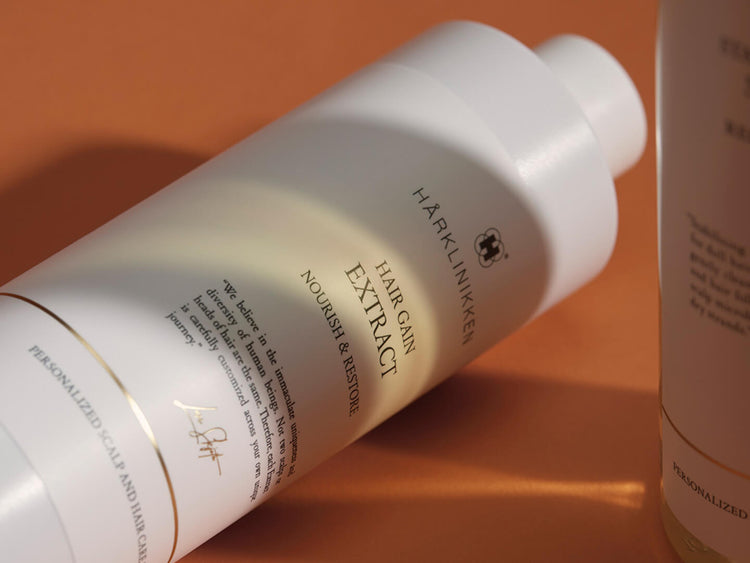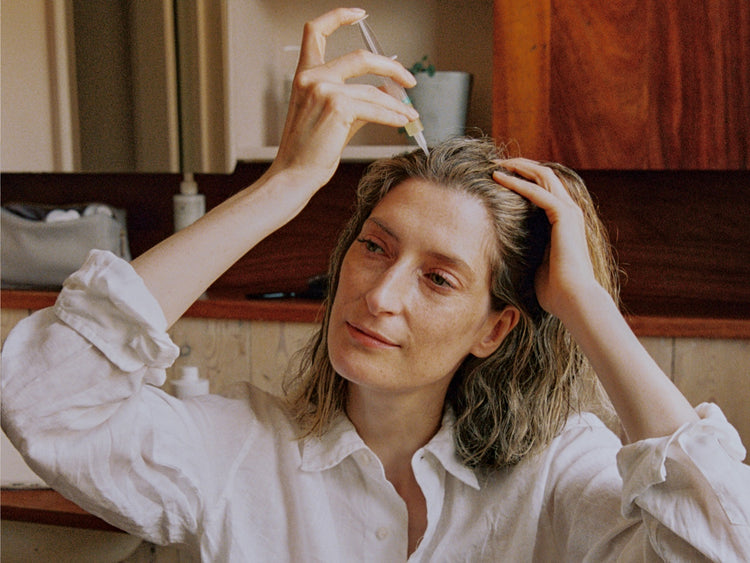It’s normal to lose around 50 to 100 hairs a day, but who's counting the exact number? If you’re noticing much more hair in your brush or shower drain, seeing more scalp through your hair or feeling like your ponytail is significantly thinner than it used to be, it could be due to the hair miniaturisation process.
What is hair follicle miniaturisation?
What occurs during hair follicle miniaturisation is that, over time, the hair follicle progressively shrinks – in turn producing strands of hair that are thinner, weaker, more prone to breakage and whose roots originate less deeply. Eventually this shrinkage means follicles can no longer produce hair that is visible to the eye.
How to identify miniaturisation:
Many people feel the density of their lengths decreasing; becoming more stringy and less abundant over time. Other clues are feeling your ponytail or braids are thinner and seeing less density at the temples where shorter "baby hairs" exist. These “baby hairs” are actually miniaturised strands.
How miniaturisation affects hair density and thickness:
Your overall hair density (the number of hairs on your head per square inch) and thickness (the diameter of a single strand) can both be impacted by hair miniaturisation. Most people will find their density level decreases and their individual strands become finer and weaker.
How miniaturisation impacts hair texture:
Because strands become finer and weaker during the miniaturisation process, each hair’s cuticle becomes less robust and can’t retain moisture at the level it used to. This can lead to hair that’s frizzier, dryer and more prone to breakage. Some people find that their curls, coils or waves lose definition, become frizzy, or even become quite straight.
Miniaturisation could be why you can’t grow your hair long
When hair miniaturisation occurs, the hair is in its anagen (growing) phase for less time; essentially meaning that exogen (shedding) phase happens sooner. Functioning at its best, hair might grow for six or seven years. But when the miniaturisation process has been going on for many years, hair can eventually grow for a year or two – or even just six months. In addition to having a shorter life cycle, the hair grows at a much slower rate so it’s unable to reach the length it used to. Additionally, hair that’s weaker is typically less hydrated and more prone to breakage, which could also impact your ability to grow your hair longer.
What is Androgenetic Alopecia? How is it connected to miniaturisation?
This is the most common type of hair thinning. Put simply, it’s hormonal (androgen) + hereditary (genetic) + hair loss (alopecia) = Androgenetic Alopecia. It's typically associated with hair thinning and loss that comes with ageing, but it can begin much earlier – even in adolescence. In Androgenetic Alopecia, hair follicles undergo miniaturisation.
What causes miniaturisation?
Whether you experience hair follicle miniaturisation depends on your unique genetic makeup and can also be influenced by ageing and hormones. Hair thinning and loss caused by miniaturisation can be exacerbated by various factors.
Here are some common contributors:
- Stress
- Poor scalp health
- Nutrient deficiencies
- Certain medications
- Medical conditions
- Tight hairstyles
But don’t panic, there’s hope.
This process occurs over time, and there are steps you can take to combat miniaturisation. The key is caring for your scalp and hair follicles.
This is where Hårklinikken can help.
By the time many people notice their hair thinning, the miniaturisation process has been occurring for some years. We recommend booking a consultation with one of our expert-trained Hair Specialists to determine whether you’re experiencing hair miniaturisation. At your initial session, a Hair Specialist will analyse the condition of your scalp and hair and ask relevant questions that will inform your customised treatment designed to optimise your scalp health for healthier, stronger hair growth.

Unsure where to start?
We only accept candidates who we believe we can help, which is why our online Hair Assessment is the best place to start. Based on your results, you will either qualify for immediate treatment or we will organize a consultation.






